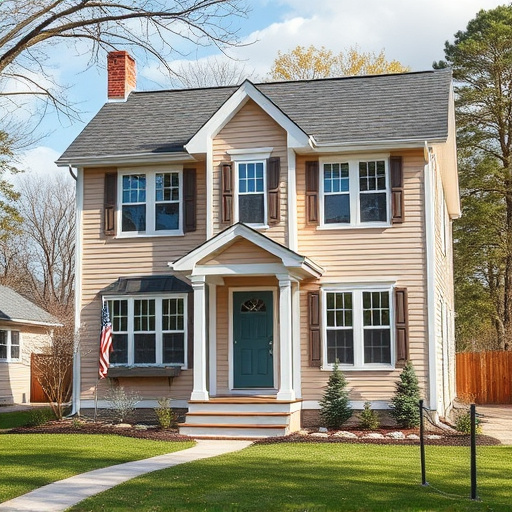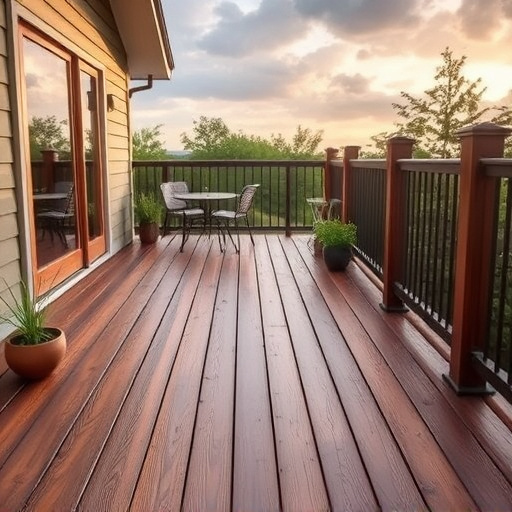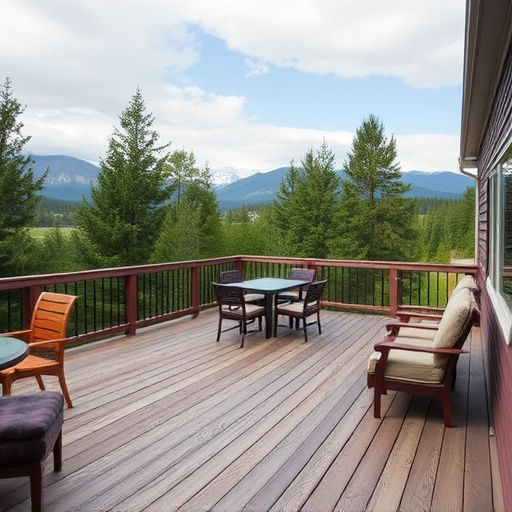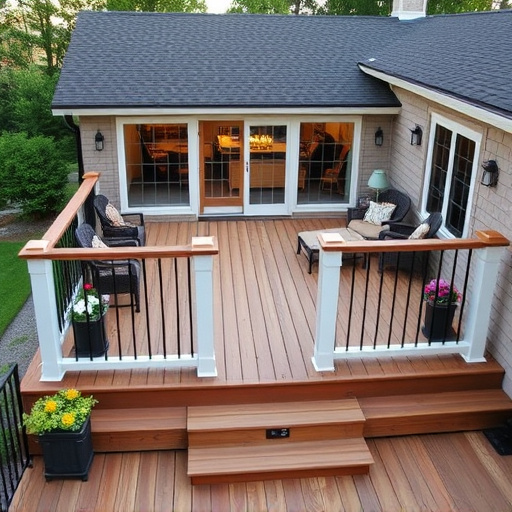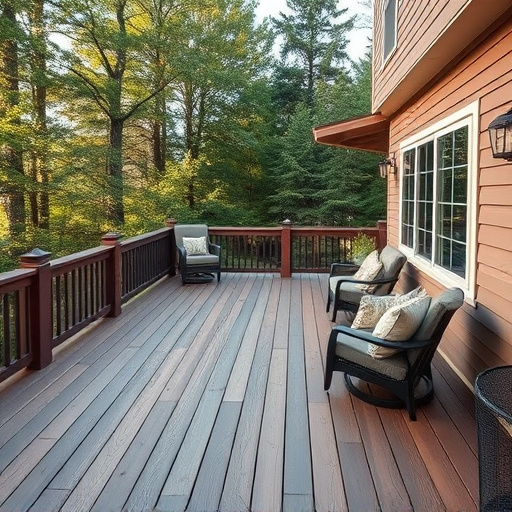Building a deck on a sloping landscape requires careful planning and expert execution. Slope angle dictates foundation type; steeper slopes need sturdier foundations. Enlist professionals for suitable designs meeting local codes, preventing water damage, and securing your investment. Focus on robust deck foundation using high-quality, weather-resistant lumber, structural elements like steel beams or concrete footers, and proper siding installation techniques. Meticulous preparation and robust construction techniques ensure stability and longevity of the deck foundation.
Building a deck on a slope might seem daunting, but with careful planning and the right techniques, it can be a rewarding project. This guide explores how to construct a strong deck foundation in such terrain. We’ll delve into understanding slope considerations critical for stability, selecting durable materials suited for the challenge, and providing a step-by-step process for secure installation. Discover expert tips to ensure your deck foundation stands strong against inclines.
- Understanding Slope Considerations for Deck Foundations
- Choosing Suitable Materials for Stability and Durability
- Step-by-Step Guide to Constructing a Secure Deck Foundation on Slopes
Understanding Slope Considerations for Deck Foundations
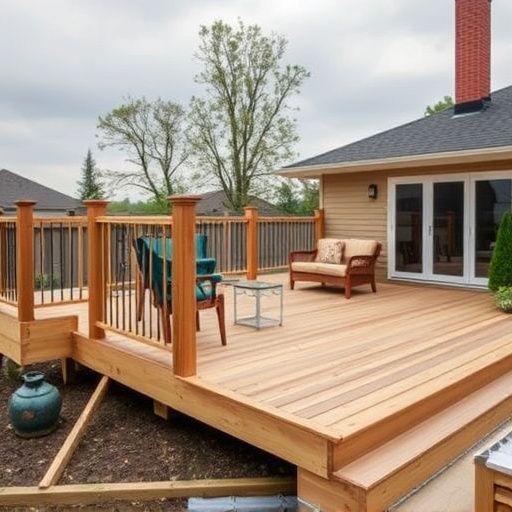
Building a deck on a sloping landscape presents unique challenges that demand careful planning and expert execution. Understanding slope considerations is paramount to ensuring your deck foundation is solid, stable, and safe. Slope angle plays a crucial role in determining the type of foundation structure required. Steeper slopes necessitate sturdier, more complex foundations to counterbalance the increased weight and potential for shifting soil.
When planning a deck on a slope, consider enlisting the help of professionals who specialize in residential roofing and siding repairs. These experts can assess the site’s topography and recommend suitable foundation designs that align with local building codes and safety standards. The right foundation will not only provide a solid base for your deck but also protect it from potential damages caused by water runoff, erosion, or shifting ground, ensuring your investment is secure for years to come.
Choosing Suitable Materials for Stability and Durability
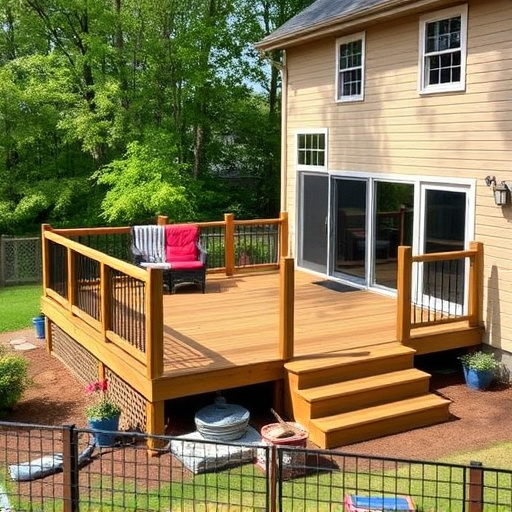
When building a deck foundation on slopes, selecting the right materials is paramount for stability and longevity. Opt for high-quality, weather-resistant lumber treated against rot and insects to ensure durability, especially in challenging terrain. Pressure-treated wood offers an excellent option, providing resistance to moisture and decay, crucial considerations when dealing with sloping ground.
Additionally, consider incorporating structural components like steel beams or concrete footers for enhanced strength. These materials, often part of home service solutions, can be tailored to specific slope angles and soil conditions, ensuring a solid base. Proper siding installation techniques, including the use of anchors and braces, further reinforce the deck foundation, protecting against lateral forces and preventing siding repairs down the line.
Step-by-Step Guide to Constructing a Secure Deck Foundation on Slopes
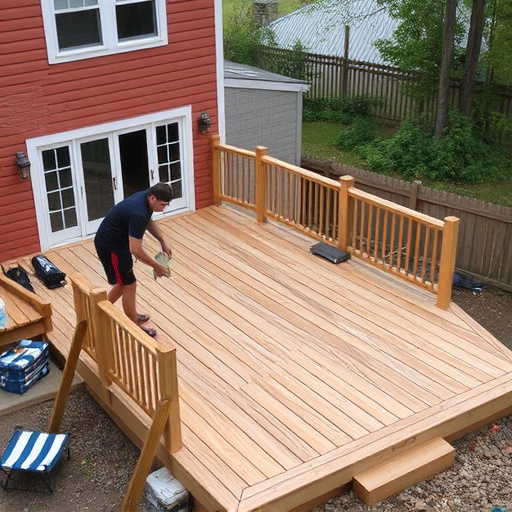
Building a deck on a sloped landscape requires careful planning and robust construction to ensure stability and longevity. Here’s a step-by-step guide to constructing a secure deck foundation on slopes, designed to withstand the elements and enhance your outdoor living space.
1. Site Preparation: Begin by assessing the slope’s severity and marking the proposed deck’s layout. Clear the area of any debris or vegetation, ensuring easy access for construction. Level the ground using compacted fill or soil amendments if necessary, creating a stable base for your deck foundation.
2. Choose the Right Materials: Select deck foundation materials suitable for sloped areas, such as treated lumber, concrete, or composite decking with a strong grip and stability. For added security on steep slopes, consider using reinforced metal connectors or bracket systems designed to hold the deck in place against gravity.
3. Install Footings: Dig trenches at regular intervals along the planned foundation’s perimeter, ensuring they align with the structural support of your deck design. Place concrete footings in the trenches and reinforce them with steel rebar to create a solid base for the deck.
4. Laying Joists: Install joists parallel to the slope, securely fastening them to the footings using metal connectors or bolts. Ensure proper spacing between joists to allow for drainage and ventilation, preventing moisture buildup that could compromise the structure.
5. Deck Planking: Attach decking boards to the joists, ensuring they’re level and secure. Consider using slip-resistant finishes or fastening systems, especially if your deck will be used in wet conditions, enhancing safety and stability on the slope.
6. Final Checks: Once the deck is constructed, inspect all connections and fasteners for security. Ensure there are no loose boards or components that could pose a tripping hazard. Consider professional roof consulting for exterior home improvements, especially if your deck design includes complex elements like rails or multiple levels, to ensure compliance with local building codes and structural integrity.
Building a deck on a slope requires careful planning and the right materials to ensure stability and longevity. By understanding the unique challenges of slope construction, selecting suitable foundations, and following a structured approach, you can create a robust and secure deck foundation that enhances your outdoor living space. Remember, the key to success lies in addressing slope considerations, choosing durable materials, and meticulous craftsmanship for a deck foundation that will withstand the test of time.

